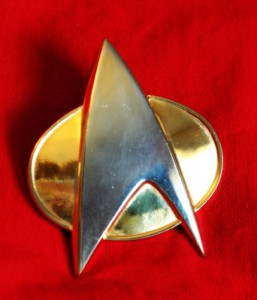FINALLY, YESTERDAYU0026#X27;S FUTURE IS HERE!
September 24, 2014
![By Carballo (http://blog.engeneral.net/) [CC-BY-SA-2.5 (http://creativecommons.org/licenses/by-sa/2.5)], via Wikimedia Commons](https://labs.sogeti.com/wp-content/uploads/sites/2/2014/09/Marvin_hhgg-182x300.jpg)
“Party? I think you ought to know I’m feeling very depressed.”
In no particular order, here are some examples of innovations that were predicted long ago that are now finally getting to a stage where we can actually start using them.more–>
*
*
*
*
*

Robots
Let’s start with an old party favorite, the robot. Wouldn’t it be great if we could create machines that look like us and can do all the chores and tasks we cannot do (or do not want to do)? This basic idea has been around for a long time. And for almost as long, it has been one of those things everyone assumes will happen in the future, but ‘not in my lifetime’. Until now!
Today you can meet with Kodomoroid® and Otonaroid®, two very lifelike androids displayed in the Miraikan museum in Japan. You can buy household robots anywhere, for doing individual chores like mowing the lawn or vacuuming the floor. Humanoid robots like ASIMO have reached a status of development where it’s easy to see them becoming commercially available.

This is how I picture all medical procedures now.
Things get smaller!
Ok, so we cannot shrink people or submarines to the size of a micrometer yet.
But there have been great achievements in nanotechnology (medicine delivery, DNA-Origami). Using nanotechnology, medicine can be delivered exactly where needed without interfering with the surroundings. Nanotech is also being used to help create stronger building materials and energy-efficient engines.

Where we’re going, we don’t need roads.
Transportation
Any credible future vision used to include flying, often autonomous, vehicles taking us anywhere we want. Plus, people in shiny, skintight clothes, but that’s maybe more of a proof of a questionable fashion sense and overall repression of the time.
Enter the Google Self-Driving Car. Not flying, but definitely autonomous, and basically ready for commercial release. Now we can finally sit back and relax while the car does all the heavy lifting.

Plus: Communicators
Communication and knowledge sharing
Internet. Just, internet.
Ok, maybe a bit more. In 1895, Paul Otlet started the “Universal Bibliographic Repertory”, an index-card based collection of knowledge items people could reference. His goal was to share information across the globe, sending information on request and setting up proxies in cities everywhere. He was still thinking in terms of horse powered delivery systems and manual filing, but the basic idea was there. Create a comprehensive overview of all human knowledge and freely share the knowledge. Now the internet has made Otlet’s vision come true. We can communicate freely (well, most of us can, anyway) and share our cat videos with anyone. We have more information at our fingertips than we can ever hope to read. Now if we just had some help to do our chores, so we had time to watch all the cat videos…
From Google Glass and Apple Watch, to mind-machine interfaces and finding god-particles, we are now living in an age of innovation, using technology that only yesterday was science fiction. And business technology is at the forefront of this development. Great time to be working in IT!

 English | EN
English | EN 